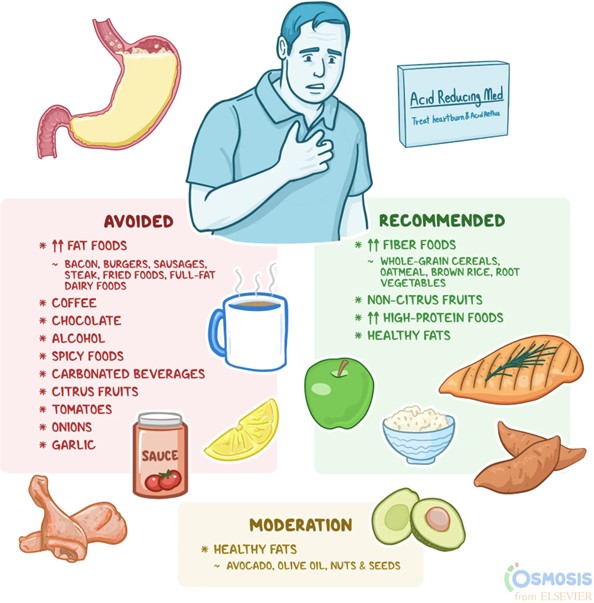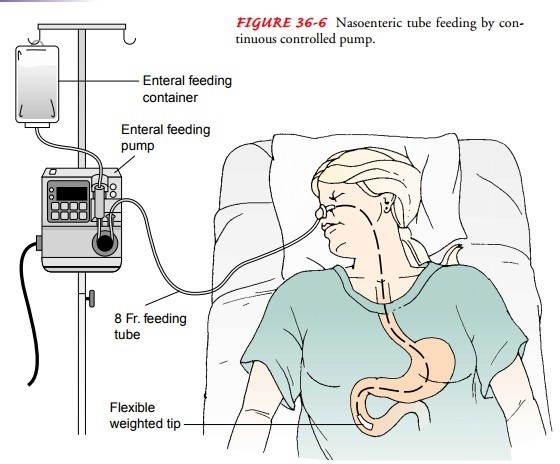A nurse is caring for a client who has throat cancer and is receiving radiation therapy. The client reports nausea, stomatitis, and weight loss. Which of the following dietary interventions should the nurse recommend?
Increase intake of liquids at mealtime.
Serve foods hot.
Consume foods high in fat content.
Select foods high in protein.
The Correct Answer is D
Throat cancer and radiation therapy can cause various side effects, including nausea, stomatitis (inflammation of the mouth), and weight loss. In this situation, it is important to focus on nutritional support and addressing the client's symptoms.
Selecting foods high in protein is recommended for this client. Protein is essential for tissue repair and maintaining muscle mass, which is crucial for recovery and preventing further weight loss. Foods high in protein include lean meats, poultry, fish, dairy products, eggs, legumes, and tofu. The nurse can work with a registered dietitian to develop a meal plan that incorporates protein-rich foods while considering the client's preferences and any specific dietary restrictions.
Regarding the other options:
● Increase intake of liquids at mealtime: While it is important for the client to maintain hydration, increasing liquid intake at mealtime may contribute to a feeling of fullness and exacerbate nausea. It is generally recommended to consume liquids between meals rather than with meals.
● Serve foods hot: Serving foods hot may not directly address the client's symptoms. The temperature of the food is unlikely to alleviate nausea, stomatitis, or weight loss.
● Consume foods high in fat content: Foods high in fat content may be difficult to tolerate for a client experiencing nausea and stomatitis. Additionally, focusing on increasing protein intake is generally a higher priority than increasing fat intake for a client experiencing weight loss
Nursing Test Bank
Naxlex Comprehensive Predictor Exams
Related Questions
Correct Answer is A
Explanation
The nurse should identify the statement "I like to drink a glass of warm milk before bed to help me sleep" as a contributing factor to gastroesophageal reflux disease (GERD). Consuming a glass of warm milk before bed can worsen GERD symptoms due to its high-fat content. High-fat foods, including dairy products, can relax the lower esophageal sphincter (LES) and delay gastric emptying, allowing stomach acid to flow back into the esophagus, leading to symptoms of GERD.
"I try to follow a low-fat, high-protein diet to help me maintain my weight": Following a low-fat, high-protein diet is actually beneficial for managing GERD. High-fat foods can worsen GERD symptoms by relaxing the LES and delaying gastric emptying, while a low-fat diet can help reduce symptoms.
"I stopped drinking caffeinated beverages several weeks ago": Avoiding caffeinated beverages is a positive step in managing GERD. Caffeine can stimulate acid production in the stomach and relax the LES, contributing to GERD symptoms.
"I have recently stopped drinking alcohol": Stopping alcohol consumption is also beneficial for managing GERD. Alcohol can relax the LES and increase acid production in the stomach, leading to GERD symptoms.

Correct Answer is A
Explanation
Check for gastric residual: Gastric residual refers to the volume of formula or contents in the stomach before the next feeding. Checking for gastric residual helps determine if the client is tolerating the feeding properly. If the gastric residual is high, it may indicate delayed gastric emptying or intolerance to the feeding, which can lead to cramping and abdominal distention. The nurse can assess the gastric residual volume and consult with the healthcare provider to determine the appropriate course of action.
Apply low intermittent suction: Applying low intermittent suction is not typically indicated for a client receiving a continuous enteral tube feeding. Suction is more commonly used for clients who have an aspiration risk or need intermittent gastric decompression. In the given scenario, the client is experiencing cramping and abdominal distention, which may require a different approach.
Request a higher-fat formula: Requesting a higher-fat formula may not be the appropriate action at this time. High-fat formulas can contribute to gastrointestinal issues such as increased risk of diarrhea or malabsorption. It is important to assess the client's tolerance to the current formula before considering changes.
Increase the rate of the feeding: Increasing the rate of the feeding may worsen the client's symptoms. Rapid administration of enteral feedings can overwhelm the gastrointestinal system and lead to complications such as cramping, distention, and diarrhea. It is generally recommended to start at a low rate and gradually increase it based on the client's tolerance.

Whether you are a student looking to ace your exams or a practicing nurse seeking to enhance your expertise , our nursing education contents will empower you with the confidence and competence to make a difference in the lives of patients and become a respected leader in the healthcare field.
Visit Naxlex, invest in your future and unlock endless possibilities with our unparalleled nursing education contents today
Report Wrong Answer on the Current Question
Do you disagree with the answer? If yes, what is your expected answer? Explain.
Kindly be descriptive with the issue you are facing.
